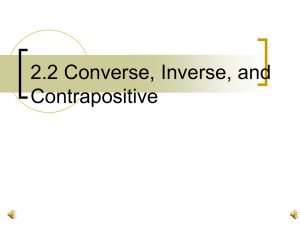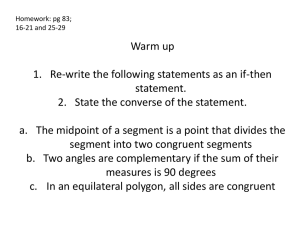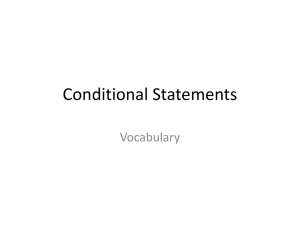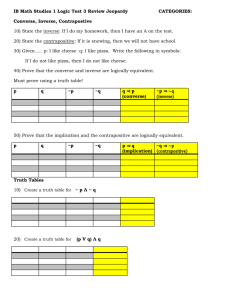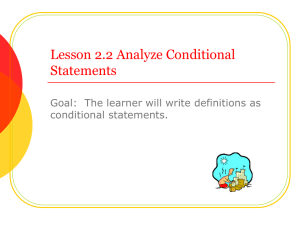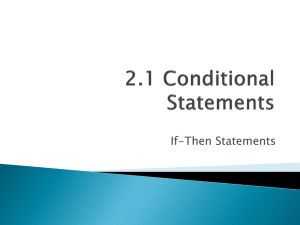Converse, Inverse, Contrapositive & Triangle Inequality
advertisement
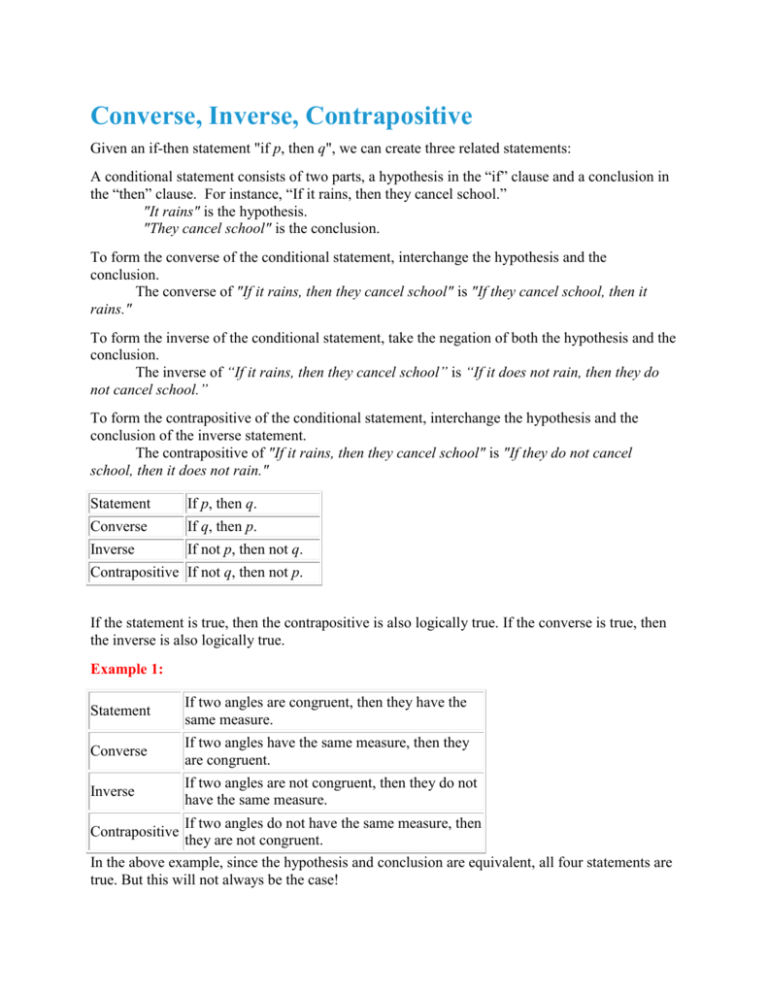
Converse, Inverse, Contrapositive Given an if-then statement "if p, then q", we can create three related statements: A conditional statement consists of two parts, a hypothesis in the “if” clause and a conclusion in the “then” clause. For instance, “If it rains, then they cancel school.” "It rains" is the hypothesis. "They cancel school" is the conclusion. To form the converse of the conditional statement, interchange the hypothesis and the conclusion. The converse of "If it rains, then they cancel school" is "If they cancel school, then it rains." To form the inverse of the conditional statement, take the negation of both the hypothesis and the conclusion. The inverse of “If it rains, then they cancel school” is “If it does not rain, then they do not cancel school.” To form the contrapositive of the conditional statement, interchange the hypothesis and the conclusion of the inverse statement. The contrapositive of "If it rains, then they cancel school" is "If they do not cancel school, then it does not rain." Statement If p, then q. Converse If q, then p. Inverse If not p, then not q. Contrapositive If not q, then not p. If the statement is true, then the contrapositive is also logically true. If the converse is true, then the inverse is also logically true. Example 1: Statement If two angles are congruent, then they have the same measure. Converse If two angles have the same measure, then they are congruent. Inverse If two angles are not congruent, then they do not have the same measure. If two angles do not have the same measure, then they are not congruent. In the above example, since the hypothesis and conclusion are equivalent, all four statements are true. But this will not always be the case! Contrapositive Example 2: Statement If a quadrilateral is a rectangle, then it has two pairs of parallel sides. Converse If a quadrialteral has two pairs of parallel sides, then it is a rectangle. (FALSE!) Inverse If a quadrilateral is not a rectangle, then it does not have two pairs of parallel sides. (FALSE!) Contrapositive If a quadrilateral does not have two pairs of parallel sides, then it is not a rectangle. Triangle Inequality Theorem The sum of the lengths of any two sides of a triangle is greater than the length of the third side. In the figure, the following inequalities hold. a+b>c a+c>b b+c>a Example: Check whether it is possible to have a triangle with the given side lengths. 7, 9, 13 Add any two sides and see if it is greater than the other side. The sum of 7 and 9 is 16 and 16 is greater than 13. The sum of 9 and 13 is 21 and 21 is greater than 7. The sum of 7 and 13 is 20 and 20 is greater than 9. This set of side lengths satisfies the Triangle Inequality Theorem. These lengths do form a triangle. Example: Check whether the given side lengths form a triangle. 4, 8, 15 Check whether the sides satisfy the Triangle Inequality Theorem. Add any two sides and see if it is greater than the other side. The sum of 4 and 8 is 12 and 12 is less than 15. This set of side lengths does not satisfy Triangle Inequality Theorem. These lengths do not form a triangle.
